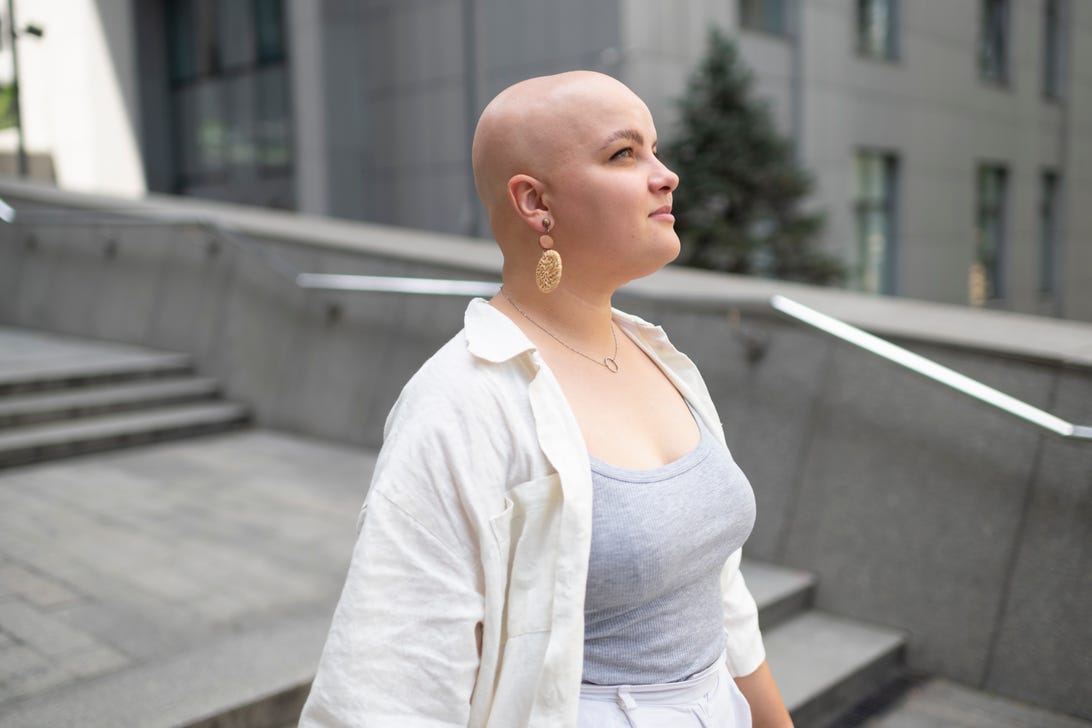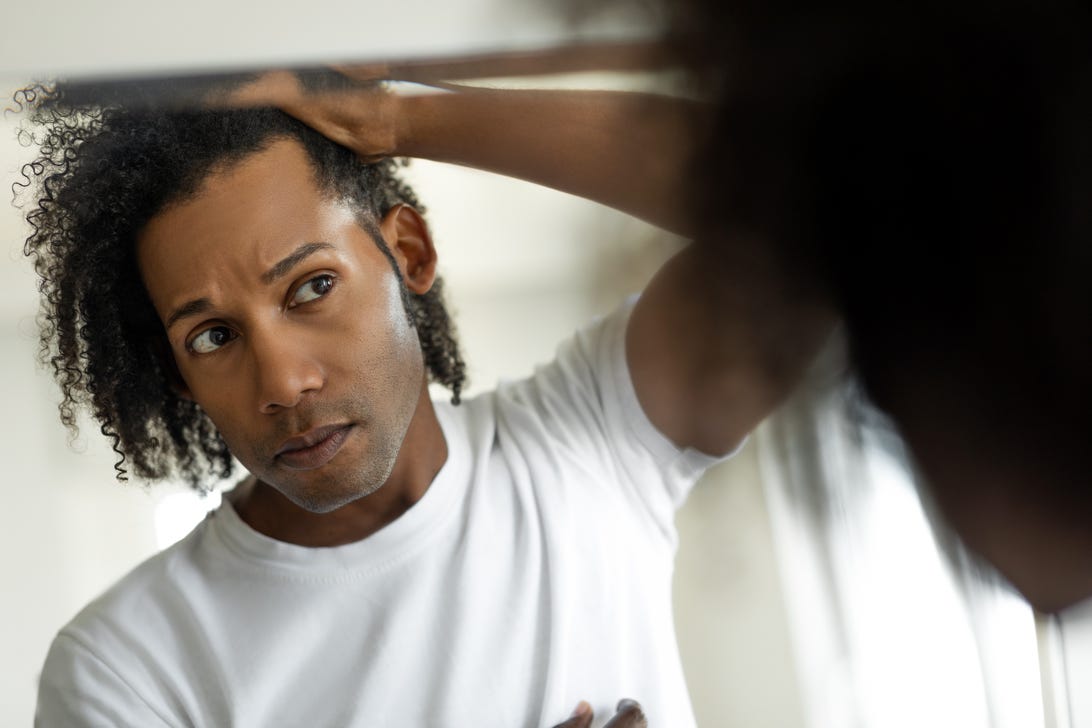
By now, you’ve probably read (or seen video of) Will Smith slapping Chris Rock after Rock made a joke directed at Smith’s wife, Jada Pinkett Smith. The joke in question was over Pinkett Smith’s hair loss, which she has publicly explained is a result of her alopecia diagnosis.
Alopecia is another name for hair loss. Despite being extremely common, hair loss can impact mood and well-being because of the way hair is so closely tied to personality and identity. There are different types of alopecia, which have different causes and can present differently. It can also occur anywhere on the body, but it’s most talked about when it occurs on the scalp.
In addition to Pinkett Smith, other public figures have opened up about having alopecia and advocated for greater awareness and acceptance, including Massachusetts Rep. Ayanna Pressley and actress Viola Davis. Alopecia affects millions of people, which means you’ve likely met someone with it, even if you don’t realize it. Here’s what to know about the common hair loss condition.
What is alopecia? What causes it?
There are a few different types of alopecia. Genetics predisposes a person to developing certain types of hair loss, but environmental factors can play a role, too.
Alopecia areata
This type of hair loss is caused by an autoimmune condition in which the hair follicle attacks itself, leading to hair loss that can be permanent or temporary. It tends to be unpredictable, according to the American Academy of Dermatology, and many people with this condition develop it when they’re younger or in their teens, but it can affect older adults, too.
According to the National Alopecia Areata Foundation, it affects more than 6.8 million Americans, or a little more than 2% of people, at some point.
Although it’s an autoimmune condition, people with alopecia areata are typically otherwise healthy, according to the AAD. Like other types of hair loss, there is a genetic component to alopecia areata, but environmental factors play a role, too, per the NAAF.
Androgenetic alopecia
Also called male- or female-pattern hair loss, androgenetic alopecia is one of the most common types of hair loss. Balding is often associated with men, particularly as they get older, but this is a common type of hair loss for women, too. According to the National Library of Medicine, it affects more than 50% of men by age 50, and is also common in women after they reach menopause, though it presents a little differently. In men, androgenetic alopecia typically causes the hairline to recede gradually, starting from the front of the hairline. In women, hair gradually thins all over the scalp.
Androgenetic alopecia can be genetic, as the name suggests, and having a family member with this type of hair loss may make it more likely you’ll develop it, too. It’s also caused by certain hormones (also in the name: androgens) that are higher in men and post-menopausal women.
People with this type of hair loss may be at higher risk of polycystic ovary syndrome (PCOS), coronary heart disease and prostate enlargement, according to the National Library of Medicine.


Central centrifugal cicatricial alopecia
This is a pattern of hair loss in the center (crown) or your scalp. In people with this condition, the hair follicles can become destroyed, cause scar tissue and lead to permanent hair loss, according to the AAD. Because it can be permanent, it’s important to seek treatment. For CCCA, that means prescription medication.
This type of hair loss is most common in Black women, but can occur in men and people of all races.
Stress or illness-based hair loss
Anagen effluvium is a type of hair loss brought on by medical treatment such as chemotherapy. Telogen effluvium is hair loss brought on by stress, illness or even a hormonal shift such as pregnancy. But both conditions have to do with interference of the hair’s growth cycle, which can return to normal once the stressful event or treatment subsides.
Traction alopecia is another type of hair loss that results from prolonged tension on the scalp, such as wearing tight ponytails or braids. It can also cause itching, redness or other symptoms. This type of hair loss can be reversible, but your doctor may prescribe antibiotics or other medication to treat the scalp.
Is there a cure for alopecia?
There are many treatments available for hair loss, though it depends on the type.
Alopecia areata may respond to treatment with steroids, which interfere with the immune system cells, according to Yale Health. However, these treatments may not work for everyone, and it can depend on the severity of the disease. Topical treatments are also available, and some mild cases may resolve on their own.
Androgenetic alopecia may be treated with the medication Minoxidil (Rogaine), which is effective for both men and women, according to Harvard Health. In some studies on hair growth with this type of alopecia, essential rosemary oil was just as effective as Rogaine, according to Healthline.
Bottom line? Talk to your doctor or health care provider if you’re experiencing hair loss that seems out of the ordinary. Even if you decide to rock your new look au natural, it’s important to be examined, as some types of hair loss can cause disease or irritation that should be treated.
The information contained in this article is for educational and informational purposes only and is not intended as health or medical advice. Always consult a physician or other qualified health provider regarding any questions you may have about a medical condition or health objectives.
